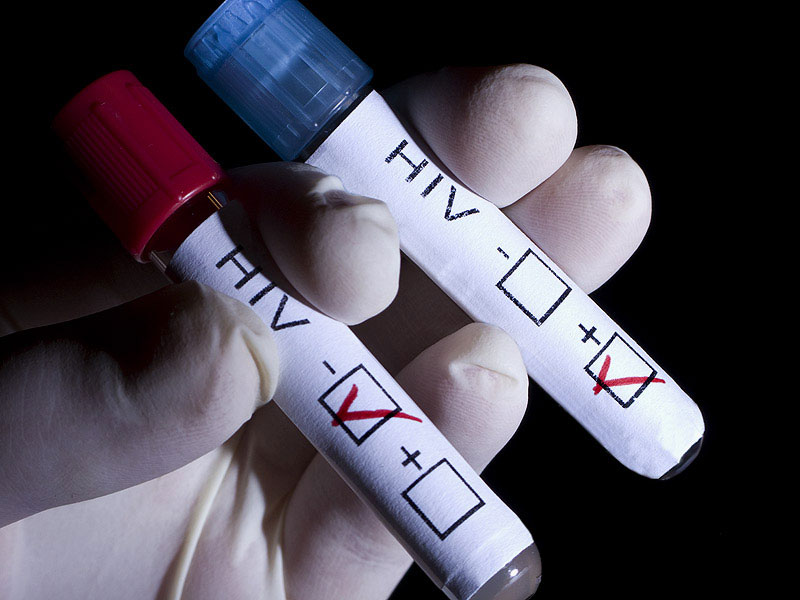The Southwest Petroleum University in Nanchong City, in China, has started selling tests for HIV in their vending machines. Now, for only $4.40 (approximately 30 yuans), students can get the urine test. This was an initiative by the Association of STD and AIDS Prevention.
It seems that due to the high increase of HIV cases -especially among young people- in the country, the government now sees this as a priority. According to the Joint United Nations Programme on HIV/AIDS (UNAIDS), half a million people are diagnosed with the infection. And although it is a small amount considering the total population, it is still something to be worried about. Research from the Universities in Nanchong City established that the increase rates year-over-year is of 43% and 80% of them are from sexual intercourse between same-gendered people.

The news has been controversial on the social media. People argue that it is a very low price (10 times less than the original) and it might make other people take advantage of that by selling it via the internet. They also argue that it is not the way to promote HIV prevention; encouraging safe sex would be a more effective one.
Otherwise, people who support the idea say that it is a good way to increase the awareness of the situation many people are and could be facing. As reported by Fox News, the Chinese curriculum does not teach in an adequate way about these infections, what they are and how to treat them. This makes the patients be ashamed of the condition they are facing. They are shunned by their near ones, and those who know they have HIV do not seek help because they are scared of how society will treat them. Selling the tests could be a starting point to change that.
Insight on HIV tests and treatments
The HIV/AIDS tests have the following functions or objectives:
- To detect the plasma status to assess it.
- To see if there is an immune function to HIV-infected patterns.
- The stage of the infection, in case there is so.
- And with the data obtained before, to determine the drug therapy or the treatment needed.
The methods to diagnose all of this vary from mental to physical and psychological and social. In 2012 a set of pills was released to the market -the PrEP- by the Truvada company. Enstars tell us that at first it was not accepted, which has changed from time. But the main concern, in this case, is that this pill may not be reaching the places that need it.
Related to this, there´s another issue happening in Canada. The people with HIV/AIDS feel abandoned by the government because it will start cutting funds to organizations providing HIV treatment. Funding will end in March 2017, which could leave people without access to support and care services.
Christian Hui is very concerned about this. He is an HIV-positive man who coordinates the Ontario Positive Asians Network with Asian Community AIDS Services (ACAS) in Toronto and is afraid these cuts will end up hurting people affected by the infection in East and South Asia.
Gary Lacasse -Executive Director of the Canadian AIDS Society- has the same position. He describes this as “catastrophic” since 30% to 50% of his organization´s funding will be cut as well. Same will happen to the Canadian Aboriginal AIDS Network, which will be losing 70% of its funding.
Lacasse sees this as urgent. By the end of 2014, 7,500 Canadians were diagnosed with HIV… He said the cuts would effect the ability of the country to tackle the epidemic. But he is doing everything he can to change this. He created a Change.org petition asking the Health Minister -Jane Philpott- to increase the funding and create an integrated action plan to infections such as HIV, Hepatitis C, and others.
The Chief Public Health Officer -Dr. Greg Taylor- clearly sees this in a different perspective. He said that the infection´s treatment was the responsibility of each province and territory. He said the government would keep assisting and supporting them but the main focus was the prevention of this problem. This will be implemented especially in the higher-risk populations, like sex workers and transgender people, and in higher-risk places like Saskatchewan (a Canadian region).
Prevention seems to be the focus every country is taking. It would be incorrect to say that people are against these measures because they do agree on the importance of prevention. But they believe that by doing so, governments are leaving the other parts of the problem aside. In Canada, the fear consists that people who are already diagnosed with HIV might end up worse than they are now because of the lack of money to sustain the corresponding care needed.
Among other worries, the incomplete and unequal distribution play an important role. For this, the monitor tests market has been defined and divided into six key regions: North America, Latin America, Western Europe, Eastern Europe, Asia-Pacific and the Middle East with Africa. North America is the largest market for HIV/AIDS monitoring tests due to the advanced healthcare setup and facilities it possesses, but Africa is the most infected region, which makes it a big opportunity option for the market.
Let’s hope these preventions and tactics work so the increase of HIV cases can be controlled, and another cases increase can be avoided.
Source: CBC News.
